 W
WThe Gospel according to John is the fourth of the four canonical gospels. It contains a highly schematic account of the ministry of Jesus, with seven "signs" culminating in the raising of Lazarus and seven "I am" discourses culminating in Thomas's proclamation of the risen Jesus as "my Lord and my God"; the concluding verses set out its purpose, "that you may believe that Jesus is the Christ, the Son of God, and that believing you may have life in his name."
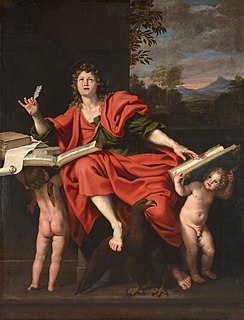 W
WIn Christian scholarship, the Book of Signs is a name commonly given to the first main section of the Gospel of John, from 1:19 to the end of Chapter 12. It follows the Hymn to the Word and precedes the Book of Glory. It is named for seven notable events, often called "signs" or "miracles", that it records.
 W
WThe Bread of Life Discourse is a portion of the teaching of Jesus which appears in the Gospel of John 6:22–59 and was delivered in the synagogue at Capernaum.
 W
WCana of Galilee is the location of the Marriage at Cana, at which the miracle of turning water into wine took place in the Gospel of John.
 W
WCelidonius is the traditional name ascribed to the man born blind whom Jesus healed in the Gospel of John 9:1–38. This tradition is attested in both Eastern Christianity and in Catholicism.
 W
WChrist Child, also known as In the Beginning or the Millennium Sculpture, is an outdoor sculpture by Michael "Mike" Chapman, located under the portico of St Martins-in-the-Fields at Trafalgar Square in London, United Kingdom. The opening text from the Gospel of John is inscribed around the sculpture: "In the beginning was the word and the word became flesh and lived among us". Chapman has said of the sculpture: "For the millennium I was commissioned to produce a sculpture to be placed in Trafalgar square, during Christmas prior to the celebrations. It seemed to me that a tiny life-size baby carved from stone in such an enormous environment would be the best way to remind us all of just whose birthday we were celebrating. In a 4.5 tonne block of Portland stone, this work can be found at the entrance to the church." It has been called "strikingly modern".
 W
WThe Gospel According to John is a part of the Pillar New Testament Commentary series. It provides a comprehensive introduction to the Gospel of John. It was published in 1990 and written by D. A. Carson, who is also the General Editor of the series.
 W
WThe phrase "the disciple whom Jesus loved" or, in John 20:2, the disciple beloved of Jesus is used six times in the Gospel of John, but in no other New Testament accounts of Jesus. John 21:24 states that the Gospel of John is based on the written testimony of this disciple.
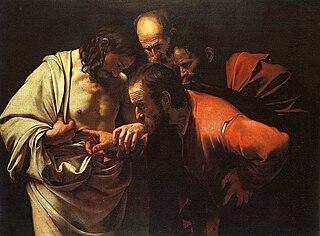 W
WA doubting Thomas is a skeptic who refuses to believe without direct personal experience—a reference to the Apostle Thomas, who refused to believe that the resurrected Jesus had appeared to the ten other apostles, until he could see and feel the wounds received by Jesus on the cross.
 W
WEcce homo are the Latin words used by Pontius Pilate in the Vulgate translation of the Gospel of John, when he presents a scourged Jesus Christ, bound and crowned with thorns, to a hostile crowd shortly before his Crucifixion. The original New Testament Greek: "ἰδοὺ ὁ ἄνθρωπος", romanized: "idoú ho ánthropos", is rendered by most English Bible translations, e.g. Douay-Rheims Bible and King James Version, as "behold the man". The scene has been widely depicted in Christian art.
 W
WIn the New Testament, Chapters 14–17 of the Gospel of John are known as the Farewell Discourse given by Jesus to eleven of his disciples immediately after the conclusion of the Last Supper in Jerusalem, the night before his crucifixion.
 W
WFeeding the multitude is a term used to refer to two separate miracles of Jesus reported in the Gospels.
 W
WThe first use of the Compass Rose emblem of the Anglican Communion was occasioned by the convening in 1954 of "The First World Congress of the Anglican Communion" at The Cathedral Church of St. Mark, Minneapolis, Minnesota, all as is memorialized in stone at the crossing of the cathedral. It was designed in that year for the Congress by The Canon Edward N. West of the Cathedral Church of Saint John the Divine in New York. The Compass Rose was modernized in 1988 and the new design was laid into the floor of Canterbury Cathedral during the Twelfth Lambeth Conference of Anglican bishops.
 W
WThe Good Shepherd is an image used in the pericope of John 10:1–21, in which Jesus Christ is depicted as the Good Shepherd who lays down his life for his sheep. Similar imagery is used in Psalm 23. The Good Shepherd is also discussed in the other gospels, the Epistle to the Hebrews, the First Epistle of Peter and the Book of Revelation.
 W
WThe Gospel of John is a 2003 epic film that recounts the life of Jesus according to the Gospel of John. The motion picture is a word-for-word adaptation of the American Bible Society's Good News Bible. This three-hour, epic, feature film follows John's Gospel precisely, without additions to the story from the other Gospels or omissions of the Gospel's complex passages.
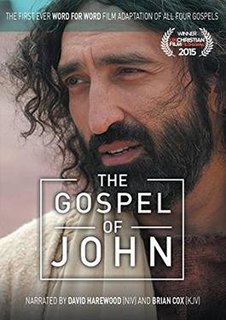 W
WThe Gospel of John is a 2014 film of the Gospel of John directed by David Batty with Selva Rasalingam in the role of Jesus. A word-for-word adaptation from the fourth book of the New Testament in the Christian Bible. The film offers an up-to-date visual perspective on the life of Jesus Christ, his miraculous signs and controversies, miracles such as raising Lazarus from the dead, final words, death and resurrection.
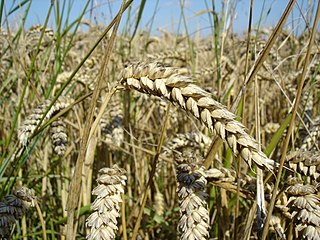 W
WParable of the Grain of Wheat is an allegory on resurrection, sacrifice, and ego death, given by Jesus in the New Testament.
 W
WThe Great Gospel of John is a neo-revelationist text by Jakob Lorber, extending to about 5,500 pages in print, published in ten volumes. It is the major work of Lorber's "New Revelation" based on interior locution. It was written in Austria, in the town Graz, from August 1851 until July 1864.
 W
WThe miracle of healing the man born blind is one of miracles of Jesus in the Gospels.
 W
WThe Healing of a paralytic at Bethesda is one of the miraculous healings attributed to Jesus in the New Testament.
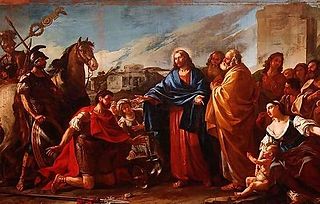 W
WHealing the royal official's son is one of the miracles of Jesus that appears in the Gospel of John. This episode takes place at Cana, though the official's son is some distance away, at Capernaum.
 W
WJesus and the woman taken in adultery is a passage (pericope) found in the Gospel of John 7:53–8:11, that has been the subject of much scholarly discussion.
 W
WJesus walking on the water is depicted as one of the miracles of Jesus recounted in the New Testament. There are accounts of this event in the gospels of Matthew, Mark, and John, but it is not included in the Gospel of Luke. This story, following the miracle of the feeding of the five thousand, tells how Jesus sent the disciples by ship back to the "other side" of the Sea of Galilee while he remained behind, alone, to pray. Night fell and the sea arose as the ship became caught in a wind storm. After rowing against the wind for most of the night, the disciples saw Jesus walking on the water. They were frightened, thinking that they were seeing a spirit, but when Jesus told them not to be afraid, they were reassured. After Jesus entered the ship, the wind ceased, and they arrived at land.
 W
W"Jesus wept" is a phrase famous for being the shortest verse in the King James Version of the Bible, as well as many other versions. It is not the shortest in the original languages. It is found in the Gospel of John, chapter 11, verse 35. Verse breaks—or versification—were introduced into the Greek text by Robert Estienne in 1551 in order to make the texts easier to cite and compare.
 W
WLamb of God is a title for Jesus that appears in the Gospel of John. It appears at John 1:29, where John the Baptist sees Jesus and exclaims, "Behold the Lamb of God who takes away the sin of the world." It appears again in John 1:36.
 W
WLazarus of Bethany, also known as Saint Lazarus or Lazarus of the Four Days, venerated in the Eastern Orthodox Church as (Righteous) Lazarus the Four Days Dead after he rose again, is the subject of a prominent sign of Jesus in the Gospel of John, in which Jesus restores him to life four days after his death. The Eastern Orthodox and Roman Catholic traditions offer varying accounts of the later events of his life.
 W
WLight of the World is a phrase Jesus used to describe himself and his disciples in the New Testament. The phrase is recorded in the Gospels of Matthew (5:14–16) and John (8:12). It is closely related to the parables of Salt and Light and Lamp under a bushel.
 W
WIn Christology, the Logos is a name or title of Jesus Christ, derived from the prologue to the Gospel of John "In the beginning was the Word, and the Word was with God, and the Word was God", as well as in the Book of Revelation, "And he was clothed with a vesture dipped in blood: and his name is called The Word of God." These passages have been important for establishing the doctrine of the divinity of Jesus since the earliest days of Christianity.
 W
WThe transformation of water into wine at the Marriage at Cana or Wedding at Cana is the first miracle attributed to Jesus in the Gospel of John. In the Gospel account, Jesus, his mother and his disciples are invited to a wedding, and when the wine runs out, Jesus delivers a sign of his divinity by turning water into wine.
 W
WAccording to the Gospel of John, Mary of Clopas was one of the women present at the crucifixion of Jesus and bringing supplies for his funeral. The expression Mary of Clopas in the Greek text is ambiguous as to whether Mary was the daughter or wife of Clopas, but exegesis has commonly favoured the reading "wife of Clopas". Hegesippus identified Clopas as a brother of Saint Joseph. In the Roman Martyrology she is remembered with Saint Salome on April 24.
 W
WMaundy, or the Washing of the Feet, or Pedelavium, is a religious rite observed by various Christian denominations. The name is taken from the first few Latin words sung at the ceremony of the washing of the feet, "Mandatum novum do vobis ut diligatis invicem sicut dilexi vos", and from the Latin form of the commandment of Christ that we should imitate His loving humility in the washing of the feet. The term mandatum (maundy), therefore, was applied to the rite of foot-washing on this day of the Christian Holy Week called Maundy Thursday.
 W
WThe New Commandment is a term used in Christianity to describe Jesus's commandment to "love one another" which, according to the Bible, was given as part of the final instructions to his disciples after the Last Supper had ended, and after Judas Iscariot had departed in John 13:30.Little children, yet a little while I am with you. Ye shall seek me: and as I said unto the Jews, Whither I go, ye cannot come; so now I say to you. 34 A new commandment I give unto you, That ye love one another; as I have loved you, that ye also love one another. 35 By this shall all men know that ye are my disciples, if ye have love one to another. —John 13:33–35
 W
WNicodemus was a Pharisee and a member of the Sanhedrin mentioned in three places in the Gospel of John:He first visits Jesus one night to discuss Jesus' teachings. The second time Nicodemus is mentioned, he reminds his colleagues in the Sanhedrin that the law requires that a person be heard before being judged. Finally, Nicodemus appears after the Crucifixion of Jesus to provide the customary embalming spices, and assists Joseph of Arimathea in preparing the body of Jesus for burial.
 W
WNoli me tangere is the Latin version of a phrase spoken, according to John 20:17, by Jesus to Mary Magdalene when she recognized him after his resurrection. The biblical scene gave birth to a long series of depictions in Christian art from Late Antiquity to the present. The original Koine Greek phrase, Μή μου ἅπτου, is better represented in translation as "cease holding on to me" or "stop clinging to me", i.e. an ongoing action, not one done in a single moment.
 W
WThe Rylands Library Papyrus P52, also known as the St John's fragment and with an accession reference of Papyrus Rylands Greek 457, is a fragment from a papyrus codex, measuring only 3.5 by 2.5 inches at its widest ; and conserved with the Rylands Papyri at the John Rylands University Library Manchester, UK. The front (recto) contains parts of seven lines from the Gospel of John 18:31–33, in Greek, and the back (verso) contains parts of seven lines from verses 37–38. Since 2007, the papyrus has been on permanent display in the library's Deansgate building.
 W
WQuod scripsi, scripsi is a Latin phrase. It was most famously used by Pontius Pilate in the Bible in response to the Jewish priests who objected to his writing on the sign (titulus) that was hung above Jesus at his Crucifixion. It is mostly found in the Latin Vulgate Bible. It is equivalent to the Latin expression Dixi, meaning that the speaker has spoken and there is no more to be said.
 W
WThe raising of Lazarus is a miracle of Jesus recounted only in the Gospel of John in the New Testament in which Jesus raises Lazarus of Bethany from the dead four days after his entombment. The event is said to have taken place at Bethany – today the Palestinian town of Al-Eizariya, which translates to "the place of Lazarus". In John, this is the last of the miracles that Jesus performs before the passion, crucifixion and his own resurrection.
 W
WThe Restoration of Peter is an incident described in John 21 of the New Testament in which Jesus appeared to his disciples after his resurrection, and spoke to Peter in particular. Jesus restored Peter to fellowship after Peter had previously denied him, and told Peter to feed Jesus' sheep.
 W
WThe Samaritan woman at the well is a figure from the Gospel of John, in John 4:4–26. In Eastern Orthodox and Eastern Catholic traditions, she is venerated as a saint with the name Photine.
 W
WTextual variants in the Gospel of John are the subject of the study called textual criticism of the New Testament. Textual variants in manuscripts arise when a copyist makes deliberate or inadvertent alterations to a text that is being reproduced. An abbreviated list of textual variants in this particular book is given in this article below.
 W
WThat they all may be one is a phrase derived from a verse in the Farewell Discourse in the Gospel of John (17:21) which says:that they may all be one. As you, Father, are in me and I am in you, may they also be in us, so that the world may believe that you have sent me.
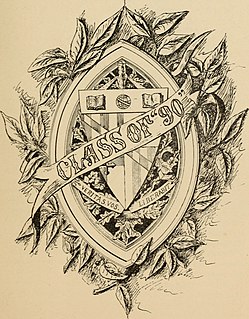 W
W"The truth will set you free'" is a statement which derives from verse 8:32 of the Gospel of John, a statement which Jesus addresses to a group of Jews who believed in Him.
 W
WThe True Vine is an allegory or parable given by Jesus in the New Testament. Found in John 15:1–17, it describes Jesus' disciples as branches of himself, who is described as the "true vine", and God the Father the "husbandman".
 W
WVia et veritas et vita is a Latin phrase meaning "the way and the truth and the life". The words are taken from Vulgate version of John 14:6, and were spoken by Jesus Christ in reference to himself.
 W
WIn Christianity the term "water of Life" is used in the context of living water, specific references appearing in the Book of Revelation, as well as the Gospel of John. In these references, the term Water of Life refers to the Holy Spirit. Ὕδωρ ζωῆς is a metaphor with two meanings: literally “flowing water” as in a river, and figuratively “living water.” “Whereas ordinary water sustains life for a while, the water God provides gives life forever.